A BUILDER, A BRIBE, & A BLOCKED VIEW (1904)
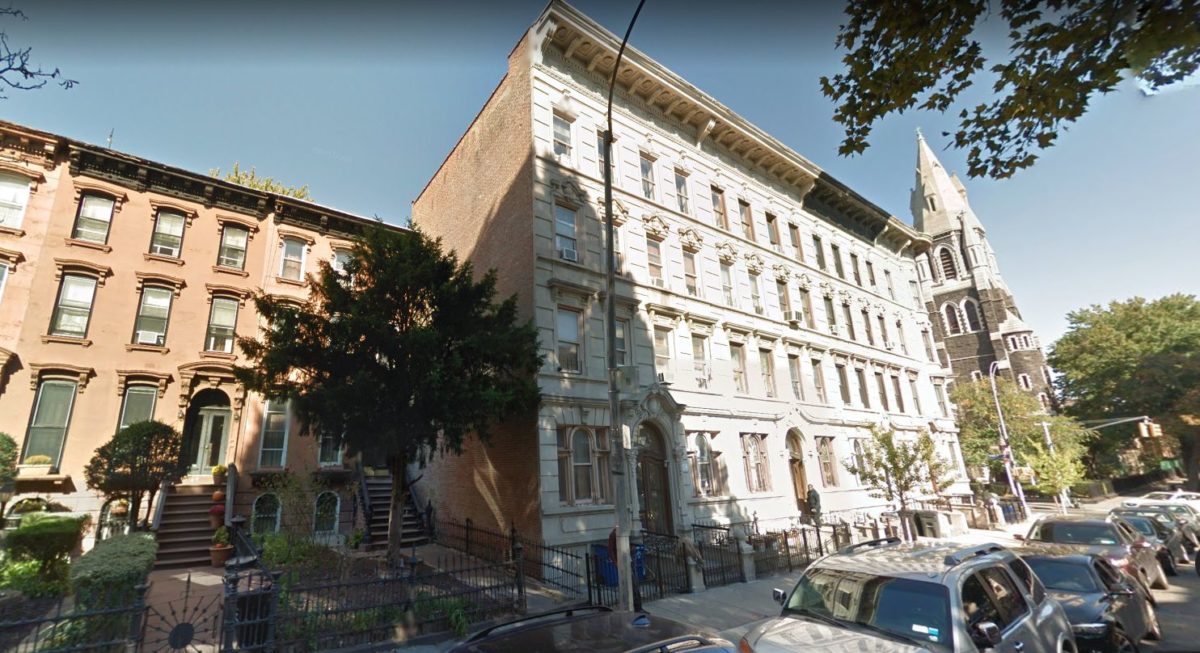
Brownstone Detectives investigates the history of our clients’ homes.
The story you are about to read was composed from research conducted in the course of one of those investigations.
Do you know the history of YOUR house?
********************************************************************************************************************************
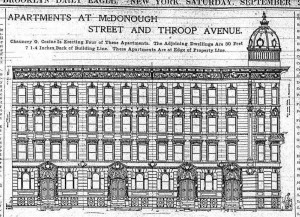
After builder Chauncey G. Cozine had filed his building plans for a set of luxury apartment buildings to be constructed at the northwest corner of Throop Avenue and MacDonough Street, the neighbors were horrified to learn of the enormity of the structures.
As a matter of fact, they were so taken aback at the prospect, that when they met to determine how to address the egregious assault on their homes, they dug deeply into their pockets – each of them as deep as he felt it was worth – to come up with a sum that, combined, would hopefully encourage Cozine to consider altering his designs.
When Cozine received the offer, though, the 30-year-old builder answered the monetary plea with a curt one-word response.
“No.”
BEFORE THE FOUNDATIONS WERE EXCAVATED
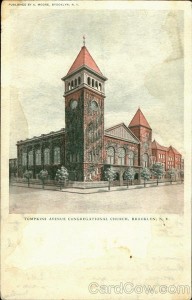
Before Cozine came along in 1904, the noble brownstone structures with their stately front gardens which sat along the north side of MacDonough Street, commanded unobstructed views up and down the street. From the front stoop of any of these structures, which belonged, incidentally, to some of the wealthiest residents of Stuyvesant Heights, could be seen rows of beautiful brownstone houses and the majestic churches of two different denominations.
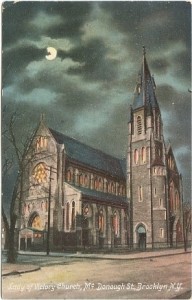
At the Tompkins end of the block, sat the Tomkins Avenue Congregational Church. At the Throop Avenue end, on the north side of the block, one could see the Roman Catholic Church of Our Lady of Victory. Both were grand structures, the views of which most certainly increased the value of these homes.
The only reason, though, that the owners on the north side of MacDonough Street could see the Church of Our Lady of Victory was that just a couple of wood frame structures existed between them and the church. Both of these wood frame buildings sat back approximately 10 feet further from the property lines than their own houses.
The church, built in Gothic eclectic style, towered over the wooden structures, providing the residents a view of the steeple and its ornate facades, which reached towards MacDonough Street.
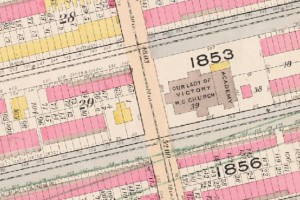
In the early 1900s, though, Cozine would purchase these frame houses (131 and 133 MacDonough) and prepare them for demolition.
THE BEATRICE & THE GARRETT
Constructed by Cozine of Indiana limestone, and designed in the French Beaux Arts manner by architect William Debus, these four apartment houses, according to the Stuyvesant Heights Historic District Designation Report, featured a “bold continuous cornice and a curved bay marking the transition to the Throop Avenue side,” which gave these houses “the aspect of a single structure.”
Each entrance had “ornamental iron grill work, steam heat, hot water supply, tiled baths, hardwood trim, nickel-plated plumbing, and electric wiring and telephone service.”
A beautiful design, though, was not enough to win over the neighbors who would no longer have the views eastward down MacDonough that they had once enjoyed, which included the Church of Our Lady of Victory at the corner.
Extending out a good 30 feet beyond their facades to the very edge of the property line, and approaching twice their height, these owners feared – and rightly so – the effect the enormous structure would have on their quality of life as well as their home values.
Together, they collected pledges of up to $7,000, as an offer to Cozine to pull back the buildings in line with theirs. Cozine, though, who had already filed and had planned the footprint that he knew he could sell at the right price, said that it would be worth considerably more money to change his plans.
As such, Cozine’s apartment buildings went up quickly and managed to sell easily. He christened 129 MacDonough Street, “The Beatrice,” after his sister or daughter, both of whom had the name, and 133 MacDonough Street he christened “The Garrett,” which was his father’s name – and his middle name.
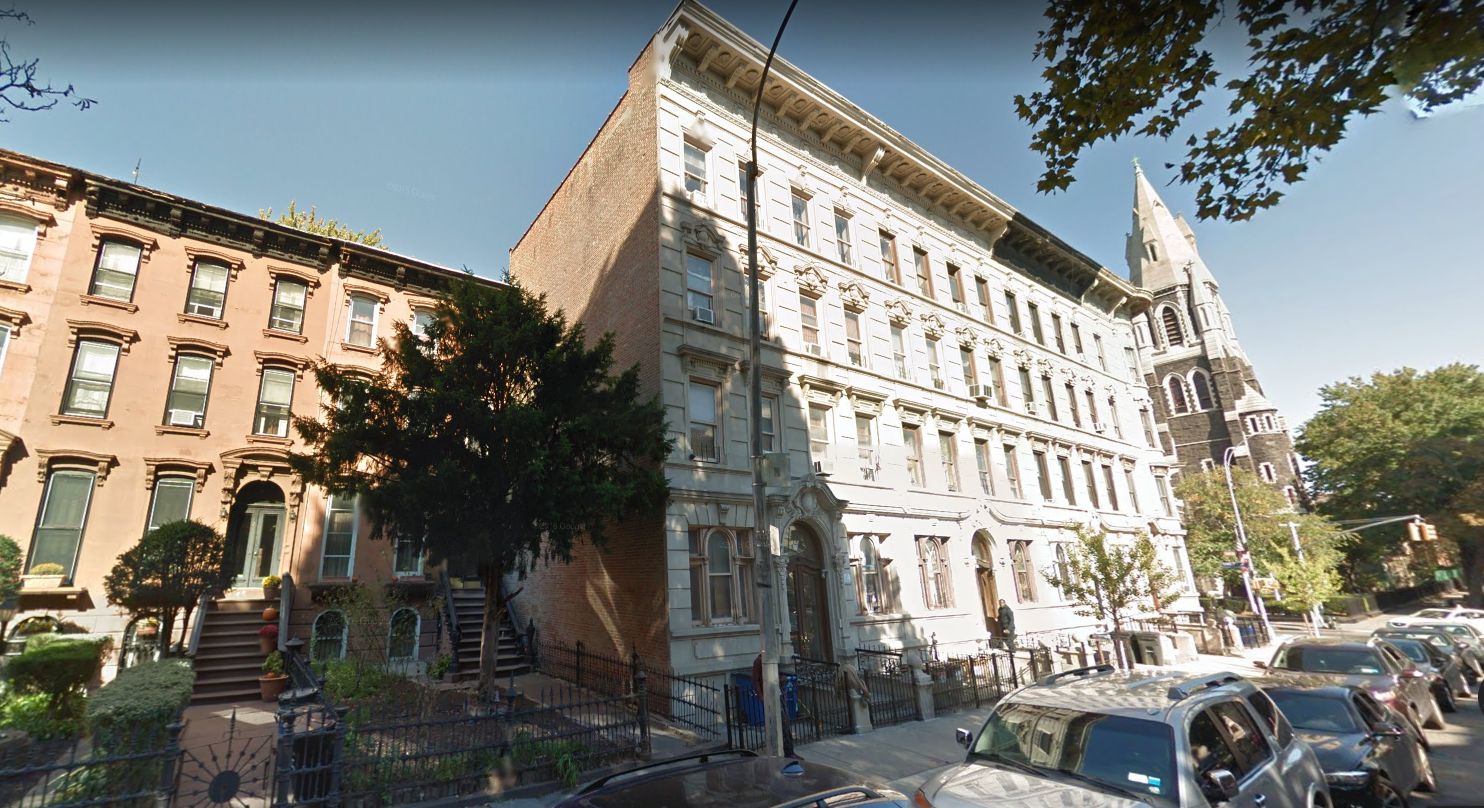
———————————————————————————————————————–
 Brownstone Detectives is an historic property research agency. Our mission is to document and save the histories of our clients’ homes. From our research, we produce our celebrated House History Books and House History Reports. Contact us today to begin discovering the history of your home.
Brownstone Detectives is an historic property research agency. Our mission is to document and save the histories of our clients’ homes. From our research, we produce our celebrated House History Books and House History Reports. Contact us today to begin discovering the history of your home.